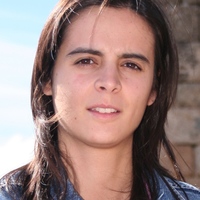- Available soonedit
Research Interests:
Research Interests:
Research Interests:
The field of regenerative medicine has been gaining momentum steadily over the past few years. The emphasis in regenerative medicine is to use various in vitro and in vivo approaches that leverage the intrinsic healing mechanisms of the... more
The field of regenerative medicine has been gaining momentum steadily over the past few years. The emphasis in regenerative medicine is to use various in vitro and in vivo approaches that leverage the intrinsic healing mechanisms of the body to treat patients with disabling injuries and chronic diseases such as diabetes, osteoarthritis, and degenerative disorders of the cardiovascular and central nervous system. Phage display has been successfully employed to identify peptide ligands for a wide variety of targets, ranging from relatively small molecules (enzymes, cell receptors) to inorganic, organic, and biological (tissues) materials. Over the past two decades, phage display technology has advanced tremendously and has become a powerful tool in the most varied fields of research, including biotechnology, materials science, cell biology, pharmacology, and diagnostics. The growing interest in and success of phage display libraries is largely due to its incredible versatility and pra...
Research Interests:
The use of bacteriophages to select novel ligands has been widely explored for cancer therapy. Their application is most warranted in cancer subtypes lacking knowledge on how to target the cancer cells in question, such as the triple... more
The use of bacteriophages to select novel ligands has been widely explored for cancer therapy. Their application is most warranted in cancer subtypes lacking knowledge on how to target the cancer cells in question, such as the triple negative breast cancer, eventually leading to the development of alternative nanomedicines for cancer therapeutics. Therefore, the following study aimed to select and characterize novel peptides for a triple negative breast cancer murine mammary carcinoma cell line- 4T1. Using phage display, 7 and 12 amino acid random peptide libraries were screened against the 4T1 cell line. A total of four rounds, plus a counter-selection round using the 3T3 murine fibroblast cell line, was performed. The enriched selective peptides were characterized and their binding capacity towards 4T1 tissue samples was confirmed by immunofluorescence and flow cytometry analysis. The selected peptides (4T1pep1 -CPTASNTSC and 4T1pep2-EVQSSKFPAHVS) were enriched over few rounds of ...
Research Interests:
... Ao Rui (espero que não percas a paciência para aturar a minha irmã ☺
e os meus filhos). ... À minha pequena família que duplicou de repente, sois o mais importante para mim: Renato (já sabes
), Ana e João (as duas estrelinhas que... more
... Ao Rui (espero que não percas a paciência para aturar a minha irmã ☺
e os meus filhos). ... À minha pequena família que duplicou de repente, sois o mais importante para mim: Renato (já sabes
), Ana e João (as duas estrelinhas que mais brilham na minha vida). Page 8. ...
Research Interests:
Freshwater mussel species are in global decline. Anthropogenic changes of river channels and the decrease of autochthonous fish population, the natural hosts of mussels larval stages (glochidia), are the main causes. Therefore, the... more
Freshwater mussel species are in global decline. Anthropogenic changes of river channels and the decrease of autochthonous fish population, the natural hosts of mussels larval stages (glochidia), are the main causes. Therefore, the conservation of mussel species depends not only on habitat conservation, but also on the availability of the fish host. In Portugal, information concerning most of the mussel species is remarkably scarce. One of the most known species, Unio pictorum is also in decline however, in the basins of the rivers Tua and Sabor (Northeast of Portugal), there is some indication of relatively large populations. The aforementioned rivers can be extremely important for this species conservation not only in Portugal, but also in the remaining Iberian Peninsula. Thus, it is important to obtain data concerning Unio pictorum bioecology (distribution, habitat requirements, population structure, genetic variability, reproductive cycle and recruitment rates), as well as the g...
